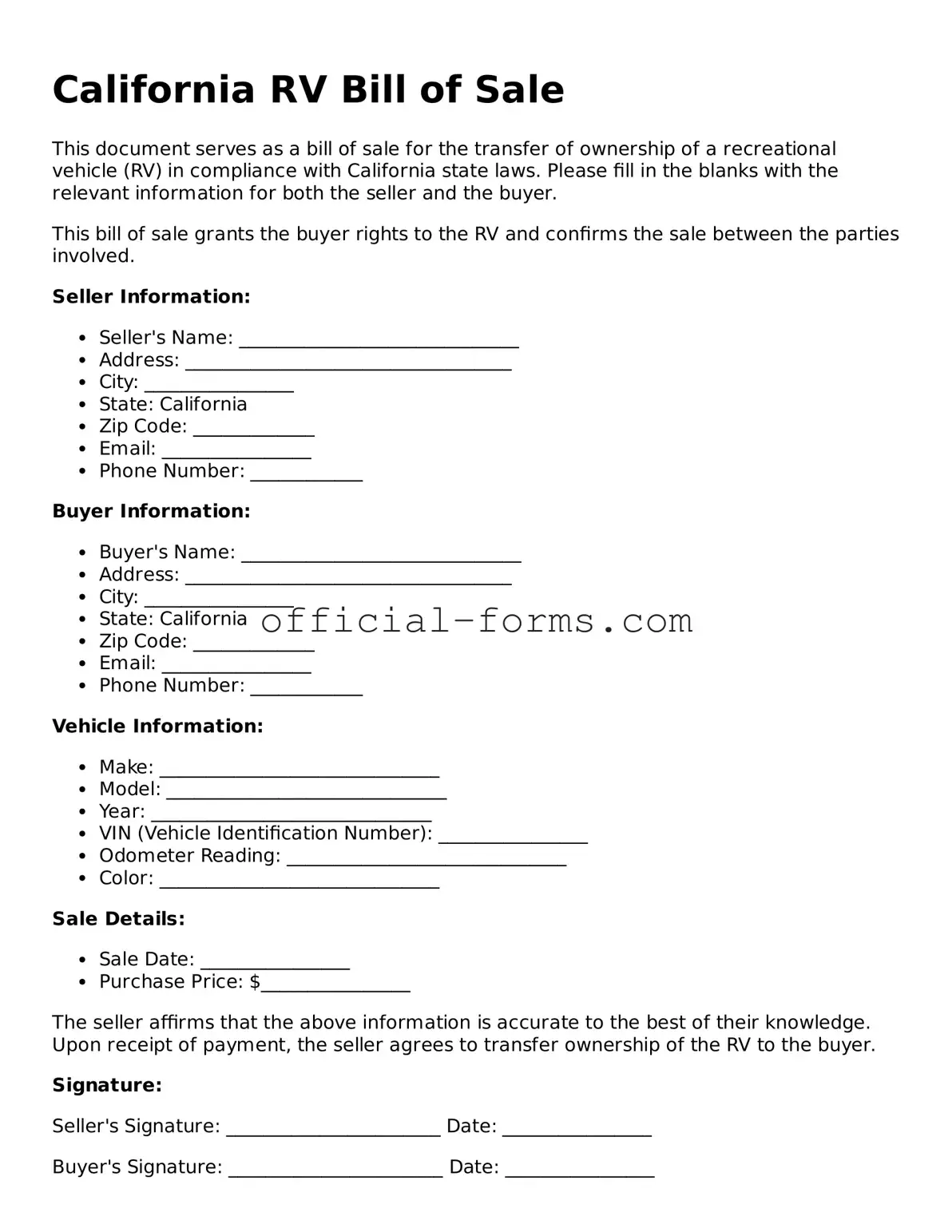When filling out the California RV Bill of Sale form, many people unknowingly make mistakes that can lead to complications down the road. One common error is failing to include the correct Vehicle Identification Number (VIN). This number is crucial for identifying the RV and ensuring that the sale is legitimate. Without the VIN, the transaction may not be recognized by the Department of Motor Vehicles (DMV).
Another frequent mistake is not providing accurate information about the buyer and seller. Each party must include their full name and address. Omitting any of this information can create confusion and may hinder the registration process. Both parties should double-check their details to avoid any issues.
Additionally, some individuals forget to include the sale date. This date is important for record-keeping and can impact the transfer of ownership. When the sale date is missing, it can lead to disputes about when the transaction occurred, which can complicate matters if either party needs to refer back to the agreement.
People often overlook the need for signatures. Both the buyer and seller must sign the form to validate the transaction. If one party neglects to sign, the sale may not be enforceable, leaving both parties vulnerable to potential legal issues.
Another mistake involves the payment details. If the transaction involves a trade-in or a partial payment, it’s essential to specify this on the form. Failing to clarify payment terms can result in misunderstandings or disputes later on.
Many also forget to include the odometer reading at the time of sale. This information is vital for the buyer, as it provides a snapshot of the RV's mileage. Not recording this detail can raise questions about the RV's condition and value.
Some individuals neglect to check for any liens on the RV. Before completing the sale, it’s wise to ensure that the RV is free of any outstanding debts. If a lien exists, the buyer may face unexpected financial obligations after the purchase.
Finally, people sometimes fail to keep a copy of the completed Bill of Sale. This document serves as proof of the transaction and can be crucial if any disputes arise in the future. Retaining a copy protects both the buyer and seller and ensures that both parties have a record of the sale.
